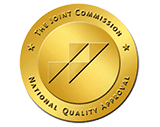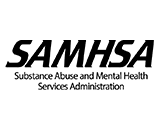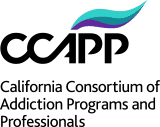Teen substance abuse and the risk of addiction in teens is a genuine and growing problem. The teen years are when there’s often experimentation with drugs, alcohol, and tobacco. Many teens will try these substances without ultimately developing an addiction. Unfortunately, for other teens who experiment, it can become a more significant issue.
When a teen can’t control their urges or cravings for a substance like drugs, tobacco products, or alcohol, it’s a substance use disorder. According to the National Institute on Drug Abuse, a moderate or severe substance use disorder is an addiction.
Teens do risky things often because they want to test boundaries. Teens may also use an addictive drug or alcohol because of peer pressure; they like the feelings substances give them or think it makes them seem older or more independent.
In adulthood, many of the people who have a substance use disorder initially began using prescription or illegal drugs or alcohol in their teen years. When young people have substance use disorders, they also experience higher rates of mental illnesses because of the effects on the adolescent brain. The teen brain is much more susceptible to the effects of an illicit drug or alcohol compared to the adult brain.
Below, we talk about what to know about the risk of addiction in teens and protective factors that can help lower this, such as parental and environmental factors.
Understanding Substance Abuse and Addiction
There are slight distinctions between substance abuse and addiction. A teen or anyone can abuse substances without meeting the diagnostic criteria for an addictive disorder. Substance abuse is any scenario where someone is misusing a substance.
For teens, this is any substance use, including the use of otherwise legal substances like alcohol. The misuse element occurs because teens aren’t legally able to use alcohol.
While teens may abuse a substance, they don’t necessarily have an addiction. Abuse does increase the risk of addiction, though, especially during the years of adolescent brain development.
Certain substances are more addictive than others. An addiction is a diagnosable condition where someone has intense, out-of-control cravings compelling them to keep using a substance. When someone is addicted to drugs or alcohol, they recognize it’s creating negative consequences in their lives, but they can’t stop.
When you’re physically dependent on drugs or alcohol, you’ve built a tolerance. They need higher doses to get the same effects. When a person stops using the substance, they’ll likely go through withdrawal symptoms with physical dependence. Cravings and out-of-control use characterize psychological addiction.
Psychological signs of addiction include:
- Using drugs or alcohol to escape or self-medicate
- Withdrawing from friends or family
- Increasing secretiveness
- Loss of interest in school and other activities that were once a priority
- Declining performance at school
- Changes in social circles
- Selling items or stealing to afford drugs or alcohol
- Anxiety, depression, or anger
- Mood swings
Some of the physical signs of addiction include:
- Changes in sleep habits, including sleeping more or less
- Changes in eating habits
- Intense cravings
- Lack of attention to personal hygiene
- Weight gain or loss
When teens misuse substances, several harmful complications can occur. For example, because the teen brain is in its formative stages, using substances at this time dramatically increases the risk of later developing an addiction. Other complications that can stem from teen drug or alcohol use include:
- Depression
- Anxiety
- Changes in brain structures and brain circuits
- Poor health
- Problems with self-esteem
- Higher risk behaviors
- Suicidal thoughts
- Relationship problems
- Legal issues or criminal behavior
- Sexually transmitted disease or unwanted pregnancy
Risk and Protective Factors
When discussing addiction and substance abuse, there are both risk and protective factors. As the number of risk factors goes up, research shows the potential for addiction to develop. The more protective factors that exist in a teen’s life, the lower the risk of substance abuse and addiction.
Risk factors, in general, can include:
- Lack of parental supervision or support
- Impulsive behavior
- Peer substance use and peer influences
- Poverty
- Child abuse or neglect
- History of sexual abuse
- Undiagnosed mental illness including attention deficit hyperactivity disorder
Not all teens who experience one or more environmental risk factors develop an addiction, but it is considered. The presence of protective factors can reduce the impact of risk factors. For example, protective factors include strong parental involvement and mental health care and interventions when needed.
In the teen years, engagement in school or group activities, good coping skills, and positive self-esteem are individual protective factors.
Situations to Avoid When Your Teen Is at Risk of Addiction
If you’re worried about the risk of drug addiction in teens, the following are specific situations and scenarios to avoid.
1. Substance Abuse in the Home
One risk factor for addiction in teens is in an environment where substance abuse is present. Even if there isn’t misuse in your home, an environment where drug or alcohol use is seen as usual or ordinary can be problematic for a high-risk teen.
You should model the behaviors you want to see out of your teens rather than engaging in risky behavior yourself.
For example, be careful about your use of alcohol and how you portray that. Many parents discuss their drinking jokingly or even have symptoms of an undiagnosed substance use disorder. Everything your teen sees you doing will ultimately impact them and how they view addictive drugs and substances.
If there’s any use of prescription drugs like opioids in your home, ensure that it’s done responsibly and only under medical supervision. Keep these substances where your teens can’t access them at all times. Prescription drug abuse is a big problem among teens and young people, and they often have access from relatives.
2. Giving Too Much Freedom
The teen years are essential to explore independence and what it might mean to be an adult. Teens do need some freedom, of course, as they learn to navigate the world while getting over addiction.
However, if your teen is at high risk for addiction, you need to be careful about giving too much freedom.
Permissive parenting and a lack of boundaries are associated with an increased risk of a substance use disorder.
While you don’t need to micromanage every aspect of a teen’s life and autonomy is essential, research shows that a home environment without any restrictions negatively affects the risk of addiction in teens.
You want to be supportive and loving and make it clear that your home is one with boundaries.
Positive parental and family engagement as well as overall family support and protective factors. Making it clear that you disapprove of substance use and parental monitoring are also protective factors.
3. Ignoring Mental Health Issues
Finally, the risk of addiction in the teenage brain is higher with undiagnosed mental health disorders. Parents may brush off red flags as typical teen behavior. That can, unfortunately, mean that a teen doesn’t get the mental health care they need. Using substances can be a way to self-medicate and cope with symptoms of a mental health disorder.
Be mindful of things in your teen’s behavior that could indicate something like depression or anxiety. Keep lines of communication open so they can feel comfortable coming to you if there is an issue. Addiction is a complex disease that often occurs at the same time as mental disorders. Effective interventions for mental health disorders can reduce the risk for drug abuse.
If you’d like to learn more about addiction treatment programs, treatment centers, support groups, and the evidence-based options that are available to you, please contact the team at Silver Lining Recovery.







